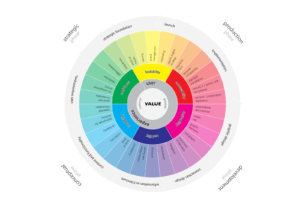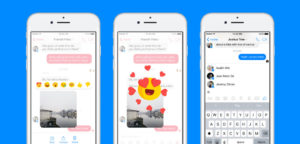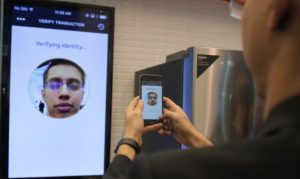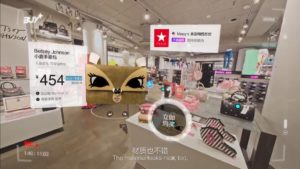Popularized by Donald Norman in the 90’s, user experience (UX, UD, UXD or UED) has over the years involve in very wide meanings. UX refers to the quality experienced by the user while interacting with a product (computer, smart-phone…), service (web site, application) or system (software). UX defined by multiple and combined processes such as marketing, usability, branding, visual design when designing a website. But UX is furthermore crucial due to it many purposes and goal seeking objectives including; increase shareholder interests and meets their needs, positive emotions, behaviour and enhance value toward the interface product as well as increasing sales and traffic.
As focusing here to e-retailers, there are many processes to take into account when designing such platform. Jesse James Garrett provides in his book “The Elements of User Experience” the five ideas elements explaining; strategy and requirements to information architecture and visual design in order to create a successful user experience.
The elements include:
(1) The Surface Plane: Includes series of images/texts (explicit, understandable, attractive, desirable) through which, by a click will transfer to another subpage needed by the user (Visual Design)
(2) The Skeleton Plane: Website strategically designed layout for the purpose of maximizing effects and efficiency (clear, simple and visible): (Interface Design/Navigation Design/Information Design)
(3) The Structure Plane: Understanding thanks to user interaction with the website, his needs and expectations to better meet and facilitate his experience during usage. (Interaction Design/Information Architecture)
(4) The Scope Plane: Group features included in website needed to help the user (ex: shopping basket) (Content Requirements/Functional Specifications)
(5) The Strategy Plane: Defines the user needs and therefore the objectives to meet them and which should as well result end goal objectives of the website (User needs/Site Objective)
Magnus Revang point out that while proceeding to all processes, the user must always be first considered. In his diagram “The User Experience Wheel”, Revang sum up all the six most important principles that must always be taken into account while designing a website: Findability (user able to find what he is looking for?), accessibility (contains able to be used by every user?), desirability (enhancing needs and interest to the user?), usability (easy to use, learn? pleasant? Meet user needs?), credibility (creates a sense of trust for the users?).
While we understand now the importance and purposes of UX for e-commerce, there is one very important concern that should be taking into serious matter; the constant change of user’s needs and expectations. This is why UX is a dynamic process, urgently needing a not ending progress. As said above, UX has complex and wide meaning which have been really popularized and looked through with the rise of digital use thanks to technology development and changes in economic trend. Below we will describe the few UX new trends observed during the last year as well as other that we might experience in the future thanks to hint indicators. This information is essential to look into due to rapid technology changes and which can help to greatly optimize business to differentiate themselves and be on top of the game. It is as well important to note that while some trends have not yet been implemented to their full potential and/or come across to all three product, system or services, it is crucial to take them into account and thoughtfully think if these ones, if implemented in the future would in fact help optimize user experience in different fields. Below we will describe some of them.
- Time saving design
While this trend has for years been already a big concern, business understand that they should furthermore improve on it category. Online companies such as Uber or Airbnb have integrated it strategy where the need and achievement goal of the user is met in a very short period of time thanks to very simple linear few steps.
- Integration of Artificial Intelligence
Artificial Intelligence is also one of key for future implementations solution for time saving in UX where if fully developed can predict the user needs before the user himself. It could be a great feature for mobile system development, e-retailer with live chat-bot or shopping assistance solution, product recommendation and many, many other. This is a great promise to value furthermore the service, system or product for the user but also to the business itself whereas it can save time and money.
- Smarter Personalization
Algorithm integration in platforms such as Facebook helps to decide automatically what kind of news feeds to prioritize for you to see based on your past and most clicked “likes, shared, comments and time spent on a particular link. Also, it takes in consideration your family members and close friends as well as the importance of the story post by your friends (such as birthday, importance of the event posted, number of engagements on a post etc).
- Improving your website design
Not only most of website must be compatible and appealing to all digital devices available due to increase of their use but also it is important to understand the user design preferences when it comes to websites. Information are important and which, only 20% of all content text are red in a website by a user, this is why it is important to shorter it as much as possible, leaving blank white spaces instead for the other features to stand out (product, image, text…).
- Micro-interaction
The Web has involved in a way which result to be able to communicate and interact in form of dialogue between users. However, as again time is getting furthermore precious, micro-interaction is a great solution. Facebook messenger app allows today users to reply with a simple emoji to a particular private message resulting to an easy, fun, time saver and understandable tool.
- Payment method
While some innovations from China might still be “too” advanced for most e-commerce websites and users, new possibilities of payment method should never the less be known and stay in the back of the head in case. Alibaba had introduced a few years back the new purchase method possibility called “Alipay” that thanks to face recognition users can purchase their items online. While this method was too advance for the majority before, it is however, now getting a lot more accepted which got a whole lot more potential after Apple introduced it feature in it iPhone X this fall. Alipay is now implement even in physical store such as KFC this year in china, showing the growing approach of it technology.
- Virtual Reality and augmented reality
Alibaba again, introduced last year Buy+ which make it now possible thanks to a very simple VR device and a smartphone, to browse and/or shop item in virtual mall such as Macy’s in NYC. This is particularly interesting whereas Macy’s is not present in China and so now gives anyway the possibility for Chinese to make real-time purchase, giving a sense of the store experience in another country. This is an incredible innovation that might really turn as a radical change, giving a real experience to the customers that will certainly result to greater value for both retailers and customers.
Sources:
• https://www.interaction-design.org/literature/topics/ux-design
• https://www.garyefox.com/infographic/user-experience-wheel-infographic/
• https://www.usertesting.com/blog/2015/09/16/what-is-ux-design-15-user-experience-experts-weigh-in/
• http://www.jjg.net/elements/pdf/elements_ch02.pdf
• https://www.invisionapp.com/blog/ux-design-trends-2017/
• https://uxdesign.cc/linear-ux-ad7dc634b5b1
• https://www.invisionapp.com/blog/ecommerce-sales-chat-ux/
• https://techcrunch.com/2016/09/06/ultimate-guide-to-the-news-feed/
• http://money.cnn.com/2017/09/01/technology/china-alipay-kfc-facial-recognition/index.html
• https://io.usabilityhub.com/top-5-ux-trends-for-2017-a4b4aedf4a45
• https://www.nngroup.com/articles/definition-user-experience/





